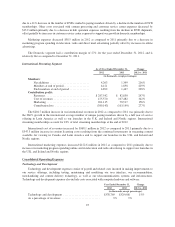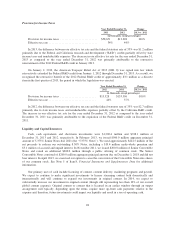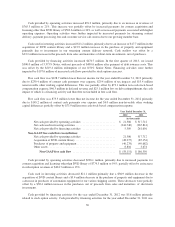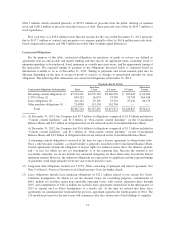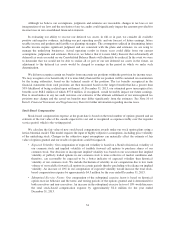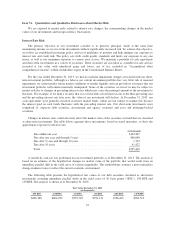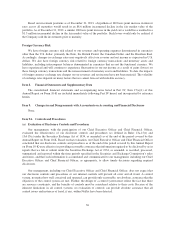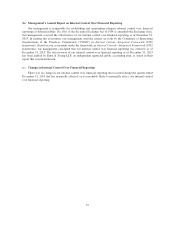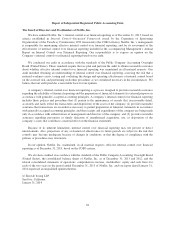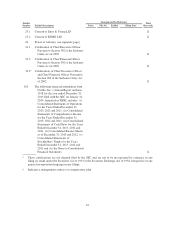NetFlix 2013 Annual Report Download - page 36
Download and view the complete annual report
Please find page 36 of the 2013 NetFlix annual report below. You can navigate through the pages in the report by either clicking on the pages listed below, or by using the keyword search tool below to find specific information within the annual report.Although we believe our assumptions, judgments and estimates are reasonable, changes in tax laws or our
interpretation of tax laws and the resolution of any tax audits could significantly impact the amounts provided for
income taxes in our consolidated financial statements.
In evaluating our ability to recover our deferred tax assets, in full or in part, we consider all available
positive and negative evidence, including our past operating results, and our forecast of future earnings, future
taxable income and prudent and feasible tax planning strategies. The assumptions utilized in determining future
taxable income require significant judgment and are consistent with the plans and estimates we are using to
manage the underlying businesses. Actual operating results in future years could differ from our current
assumptions, judgments and estimates. However, we believe that it is more likely than not that substantially all
deferred tax assets recorded on our Consolidated Balance Sheets will ultimately be realized. In the event we were
to determine that we would not be able to realize all or part of our net deferred tax assets in the future, an
adjustment to the deferred tax assets would be charged to earnings in the period in which we make such
determination.
We did not recognize certain tax benefits from uncertain tax positions within the provision for income taxes.
We may recognize a tax benefit only if it is more likely than not the tax position will be sustained on examination
by the taxing authorities, based on the technical merits of the position. The tax benefits recognized in the
financial statements from such positions are then measured based on the largest benefit that has a greater than
50% likelihood of being realized upon settlement. At December 31, 2013, our estimated gross unrecognized tax
benefits were $68.2 million of which $57.0 million, if recognized, would favorably impact our future earnings.
Due to uncertainties in any tax audit outcome, our estimates of the ultimate settlement of our unrecognized tax
positions may change and the actual tax benefits may differ significantly from the estimates. See Note 10 of
Item 8, Financial Statements and Supplementary Data for further information regarding income taxes.
Stock-Based Compensation
Stock-based compensation expense at the grant date is based on the total number of options granted and an
estimate of the fair value of the awards expected to vest and is recognized as expense ratably over the requisite
service period, which is the vesting period.
We calculate the fair value of new stock-based compensation awards under our stock option plans using a
lattice-binomial model. This model requires the input of highly subjective assumptions, including price volatility
of the underlying stock. Changes in the subjective input assumptions can materially affect the estimate of fair
value of options granted and our results of operations could be impacted.
•Expected Volatility: Our computation of expected volatility is based on a blend of historical volatility of
our common stock and implied volatility of tradable forward call options to purchase shares of our
common stock. Our decision to incorporate implied volatility was based on our assessment that implied
volatility of publicly traded options in our common stock is more reflective of market conditions and,
therefore, can reasonably be expected to be a better indicator of expected volatility than historical
volatility of our common stock. We include the historical volatility in our computation due to low trade
volume of our tradable forward call options in certain periods thereby precluding sole reliance on implied
volatility. An increase of 10% in our computation of expected volatility would increase the total stock-
based compensation expense by approximately $4.5 million for the year ended December 31, 2013.
•Suboptimal Exercise Factor: Our computation of the suboptimal exercise factor is based on historical
option exercise behavior and the terms and vesting periods of the options granted and is determined for
both executives and non-executives. An increase in the suboptimal exercise factor of 10% would increase
the total stock-based compensation expense by approximately $2.4 million for the year ended
December 31, 2013.
34



